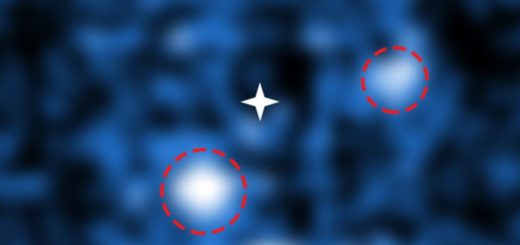Astronomers Confirm 15 New Planets Orbiting Red Dwarfs About 200 Light-Years Away

The existence of 15 new planets including one ‘super-Earth’ that could harbor liquid water, is reported by a team of astronomers in Japan. The planets orbit small cool stars – known as red dwarfs – located near our solar system.
One of the brightest red dwarfs, K2-155 that is around 200 light years away from Earth, has three transiting super-Earths, which are slightly bigger than our own planet.
Of those three super-Earths, the outermost planet, K2-155d, with a radius 1.6 times that of Earth, could be within the host star’s habitable zone.
“In our simulations, the atmosphere and the composition of the planet were assumed to be Earth-like, and there’s no guarantee that this is the case,” Teruyuki Hirano of Tokyo Institute of Technology’s Department of Earth and Planetary Sciences, who led the team in this study, said in a press release.
K2-155d could potentially have liquid water on its surface based on three-dimensional global climate simulations. However, further and more precise estimate of the radius and temperature of the K2-155 star would be needed to conclude if K2-155d is indeed habitable.
“It’s important to note that the number of planets around red dwarfs is much smaller than the number around solar-type stars,” says Hirano. “Red dwarf systems, especially coolest red dwarfs, are just beginning to be investigated, so they are very exciting targets for future exoplanet research.”
The researchers also investigated the relationship between planet radius and metallicity of the host star.
“Large planets are only discovered around metal-rich stars,” Hirano says, “and what we found was consistent with our predictions. The few planets with a radius about three times that of Earth were found orbiting the most metal-rich red dwarfs.”
In April 2018, NASA will launch Transiting Exoplanet Survey Satellite (TESS) and hopefully more planets will be discovered.
“TESS is expected to find many candidate planets around bright stars closer to Earth,” Hirano says. “This will greatly facilitate follow-up observations, including investigation of planetary atmospheres and determining the precise orbit of the planets.”
Researchers used data from NASA Kepler spacecraft’s second mission, K2, and follow-up observations using ground-based telescopes, including the Subaru Telescope in Hawaii and the Nordic Optical Telescope (NOT) in Spain.
Original story – here.



 Creators of mankind
Creators of mankind Description of “Tall white aliens”
Description of “Tall white aliens” Where they came from?
Where they came from? About hostile civilizations
About hostile civilizations The war for the Earth
The war for the Earth “Tall white aliens” about eternal life
“Tall white aliens” about eternal life Video: “Nordic aliens”
Video: “Nordic aliens” Aliens
Aliens Alien encounters
Alien encounters The aliens base
The aliens base UFO
UFO Technology UFO
Technology UFO Underground civilization
Underground civilization Ancient alien artifacts
Ancient alien artifacts Military and UFO
Military and UFO Mysteries and hypotheses
Mysteries and hypotheses Scientific facts
Scientific facts


















